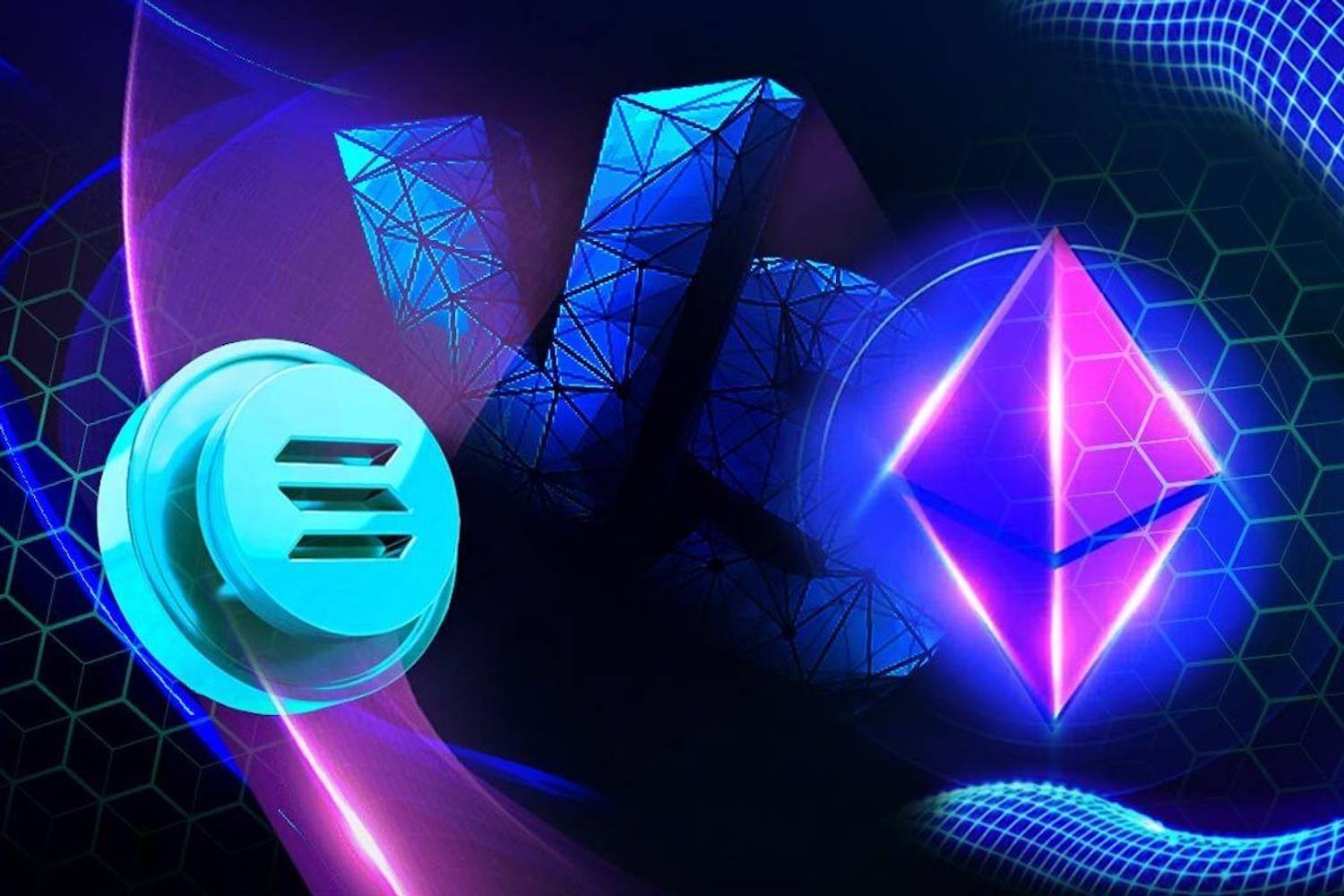
イーサリアムは後塵を拝している - ソラーナが追い抜く?
多くの人がSolanaは中央集権的であると述べており、イーサリアム自身の黎明期の問題を忘れていることが多い。この記事では、イーサリアムの過去、ソラーナの急成長の要因、イーサリアムにとっての意味、そしてブロックチェーン技術の未来について掘り下げる。
- 公開:
- 編集済み:
ブロックチェーン技術と暗号通貨の世界では、近年多くのイノベーションが起きています。数多くのプラットフォームが開発される中、EthereumとSolanaはスマートコントラクトの分野で最も著名な2つの候補として浮上しています。ここ数カ月、SolanaはEthereumと比較して採用が急増しています。
しかし、多くの人がソラナは中央集権的であると述べており、イーサリアムがその黎明期に抱えていた問題をしばしば忘れています。
Solana Revolution
Solana は2020年にローンチされ、分散型アプリケーション(dApps)とスマートコントラクトのためにスケールし、高性能なソリューションを提供する能力により、急速に支持を集めました。毎秒50,000トランザクション(TPS)という驚異的な処理能力を誇るSolanaは、バリデータクライアントの点でEthereumに追いついただけでなく、TPSの点でもEthereumを上回った。Ethereumは現在約30TPSを管理しており、Solanaのインフラが大量のトランザクションを処理するのに十分な設備が整っていることは明らかです。
But What About Solana's Security?
Solanaで最近話題になっているのはネットワーク停止に関するものですが、多くの人はEthereumが今では堅牢なネットワークを構築する際に、独自のセキュリティ問題を抱えていたことを忘れているようです。
- DAOフォーク、2016年7月
DAOフォークはDAO契約に対するハッキングによるもので、360万ドルの資金が流出しました。コミュニティは、元々影響を受けた人々が引き出すことができる新しい契約に〜1200万ETHを転送することによってネットワークをフォークすることを決定しました。しかし問題は、DAO事件はプロトコルの欠陥とは無関係であるにもかかわらず、フォーク・チェンジの状態にあります。これは、コミュニティがネットワークの実際の状態を単純に決めることができる、イーサリアムの不変の状態を弱体化させます。
- ミカンの笛、2016年10月
Solanaはボットによるサービス妨害(DoS)攻撃を受けたことがあるため、これはSolanaユーザーにはおなじみのものでしょう。同じことがTangerine Whistleのハードフォーク中にイーサリアムにも起こりました。2016年9月から、悪意のある攻撃者がユーザーのトランザクションが処理されるまでに大幅な遅延を生じさせていた。ネットワークの安定性を取り戻すために2回のハードフォークが行われましたが、Solanaとは異なり、依然として1秒あたり2桁のトランザクション(tps)しか処理できませんでした。
- スプリアス・ドラゴン、2016年11月
これは元のDoS攻撃に対する2回目のハードフォークです。オリジナルのDoS攻撃を解決するために2つのハードフォークが必要だった。
Ethereum:銀行家のチェーン
イーサリアムとは異なり、ソラナはハッキングによってネットワーク状態が変更されたことはありません。ダウンタイムに直面したことはあるかもしれませんが、エコシステムが望んだからといってソラナが状態を変えたという歴史はないことは確かです。イーサリアムがバンカーチェーンと呼ばれるのには理由があります。
Solanaの成長を促進する主な要因
Solanaの高いスループットは、高速で効率的なdAppsの構築を目指す開発者にとって魅力的なプラットフォームとなっています。競争が激化する市場において、Solanaのスケーラビリティはイーサリアムや他のプラットフォームに対して明確な優位性を提供します。
5年若いブロックチェーンはまた、独自のコンセンサスアルゴリズムであるProof of History (PoH)によって、イーサリアムと比べて大幅に低い取引手数料を提供しています。
Solanaはすぐに開発者や投資家の注目を集めました。その強固なエコシステムには現在、DeFi、ゲーム、NFTにまたがる数百のプロジェクトがあります。
イーサリアムの対策
Solanaの急成長はイーサリアムから注目を集めていますが、イーサリアムも黙ってはいません。イーサリアムは現在、イーサリアム2.0に取り組んでいます。これは、プラットフォームをプルーフ・オブ・ワーク(PoW)からプルーフ・オブ・ステーク(PoS)に移行することを目的とした大幅なアップグレードで、スケーラビリティ、セキュリティ、エネルギー効率を大幅に改善するものです。しかし、イーサリアム2.0の完全な実装のスケジュールはまだ不透明であり、開発の多くの段階がまだ進行中です。
前途
Solanaの台頭は紛れもなく、スマートコントラクト分野におけるイーサリアムの優位性に挑戦状を突きつけています。以前の記事で取り上げたSolanaのウィキペディアページを操作するだけでなく、人気のあるニュースアウトレットが常にSolanaを悪いイメージで描こうとするようにさえなっています。
Solanaの開発者は、より強固なネットワークのためにブロックチェーンの問題(まだベータ版であることに注意)を解決し続けているため、Ethereumはその欠点に対処し、競争力を取り戻すために迅速に行動しなければなりません。とはいえ、2つのプラットフォームのライバル関係はブロックチェーン業界のイノベーションを促進し、エコシステム全体に利益をもたらしている。ブロックチェーン技術の未来は日進月歩であり、最終的にどちらのプラットフォームがスマートコントラクトの分野でトップの座を確保するかは、時間が経ってみなければわからない。



